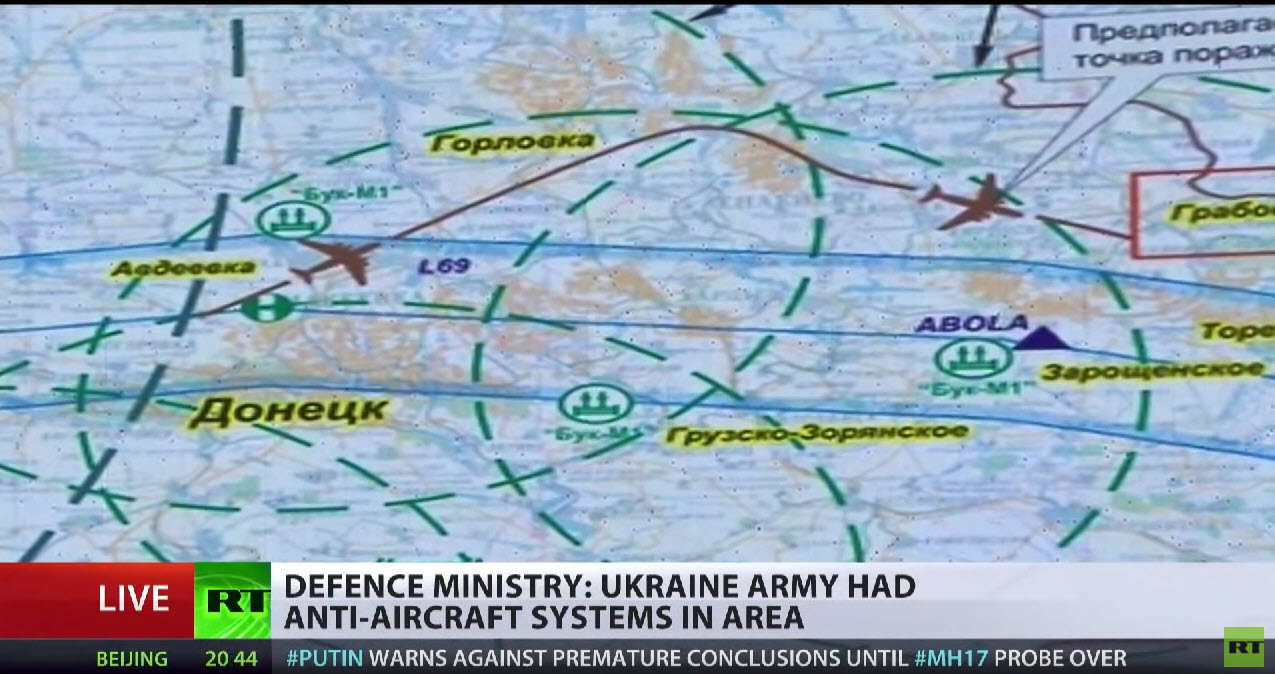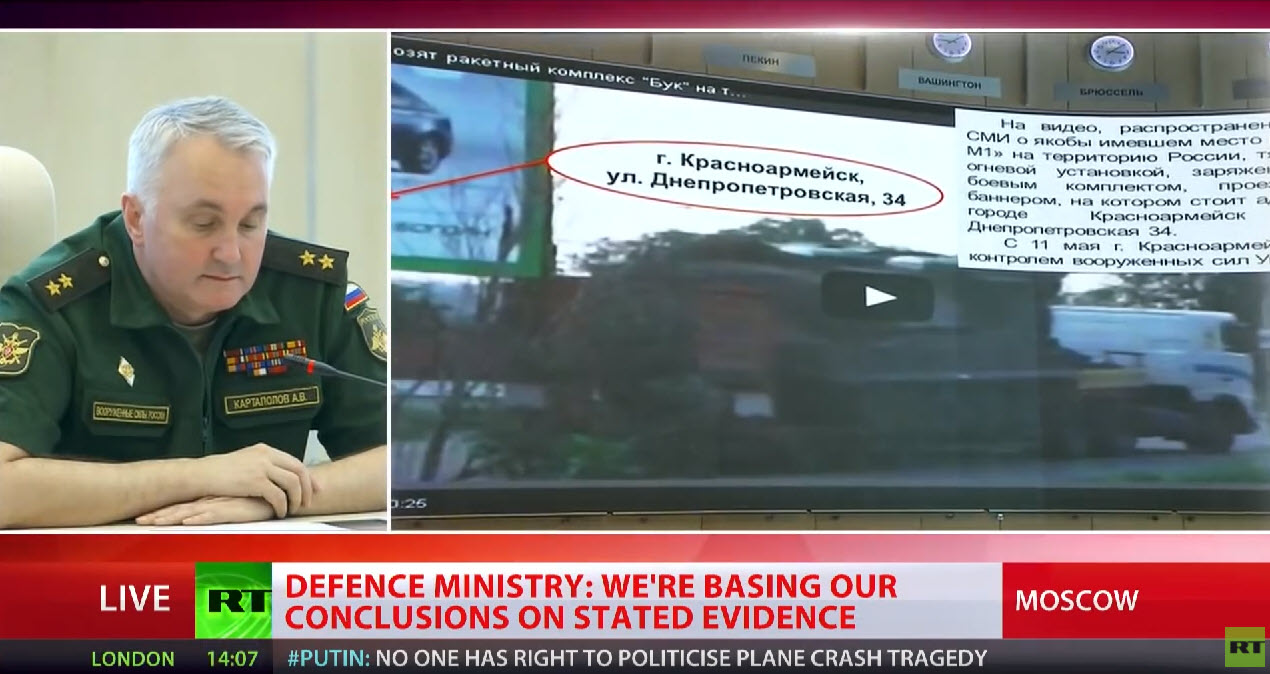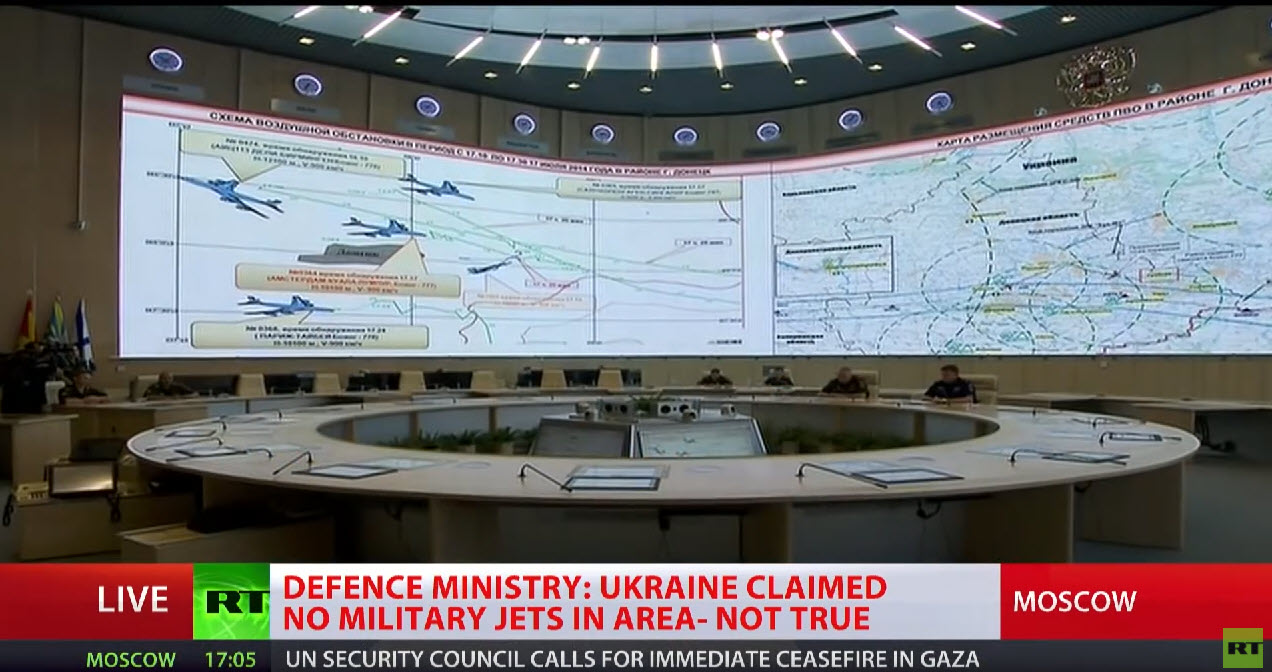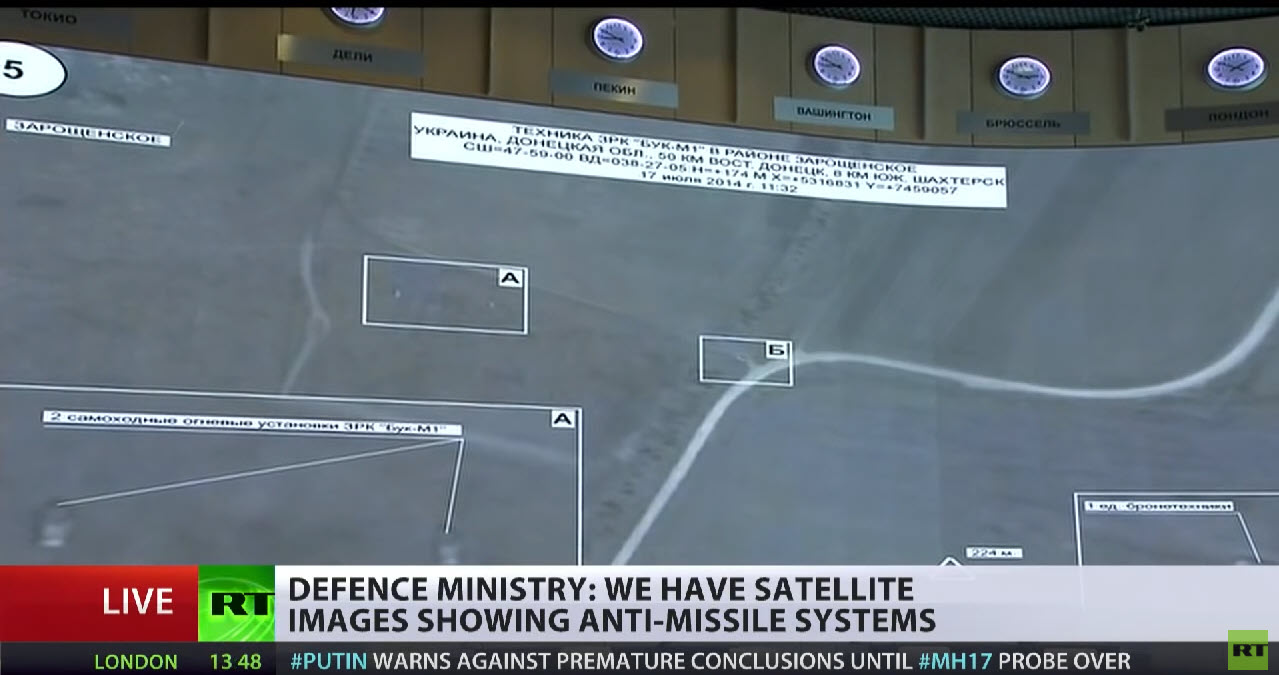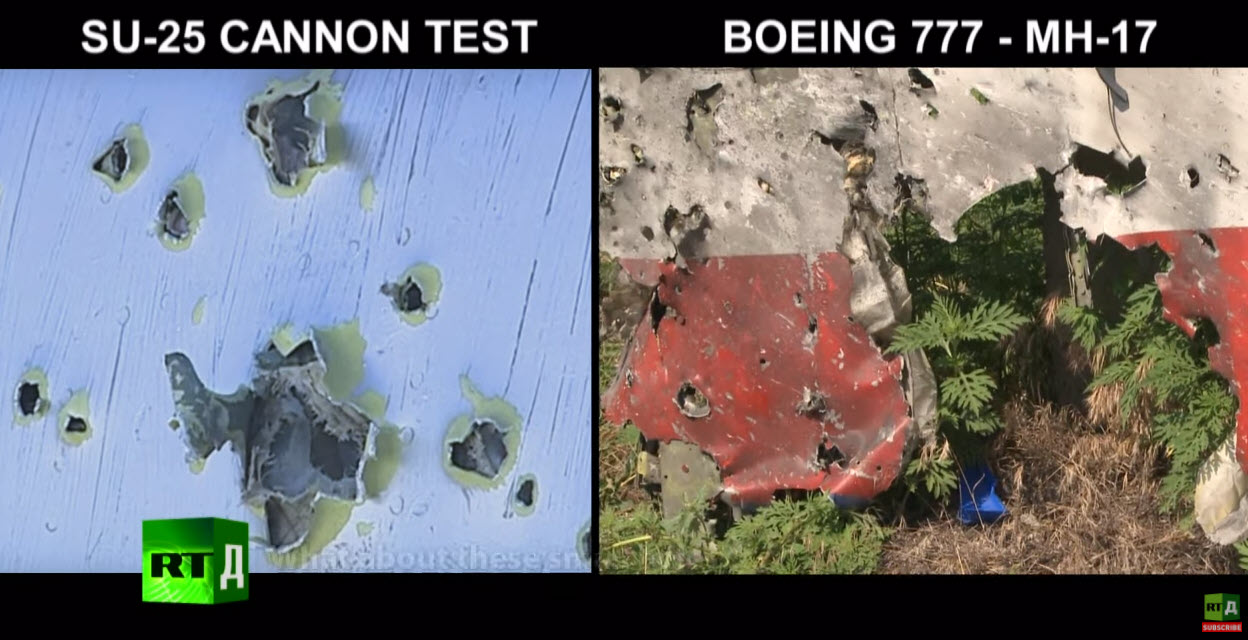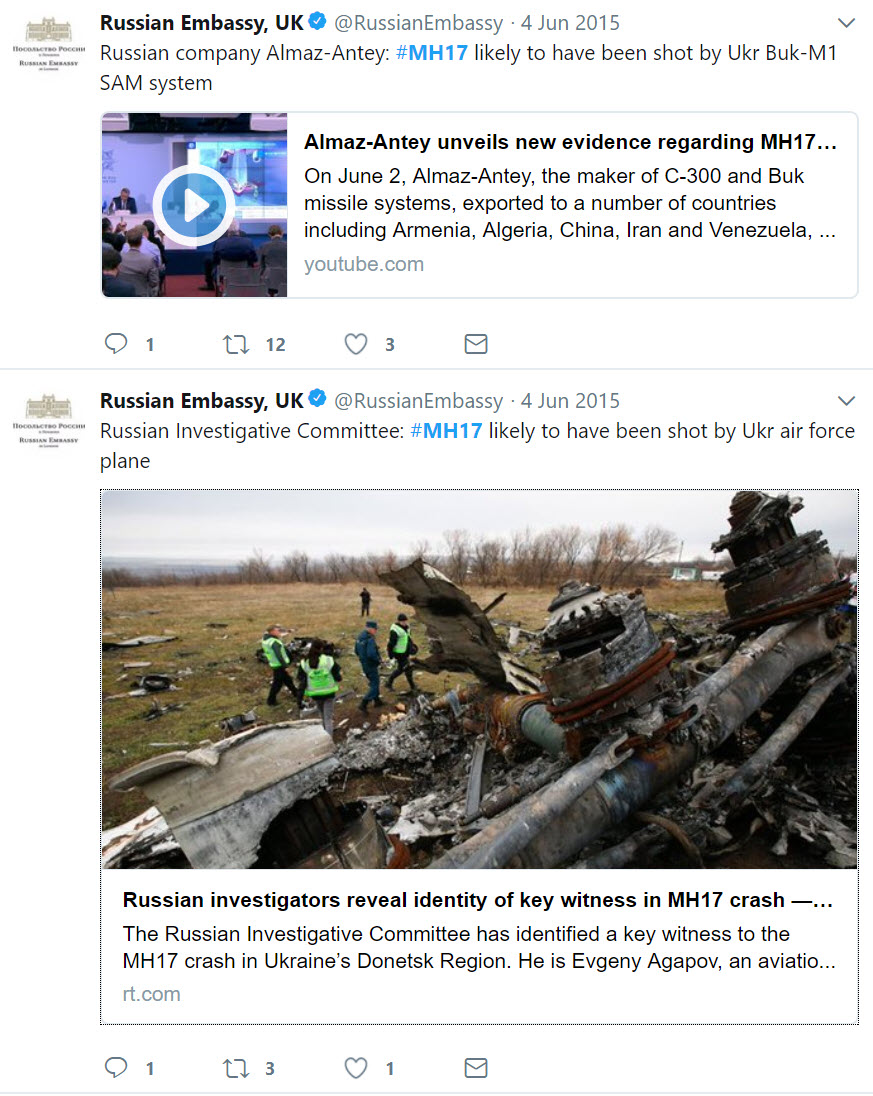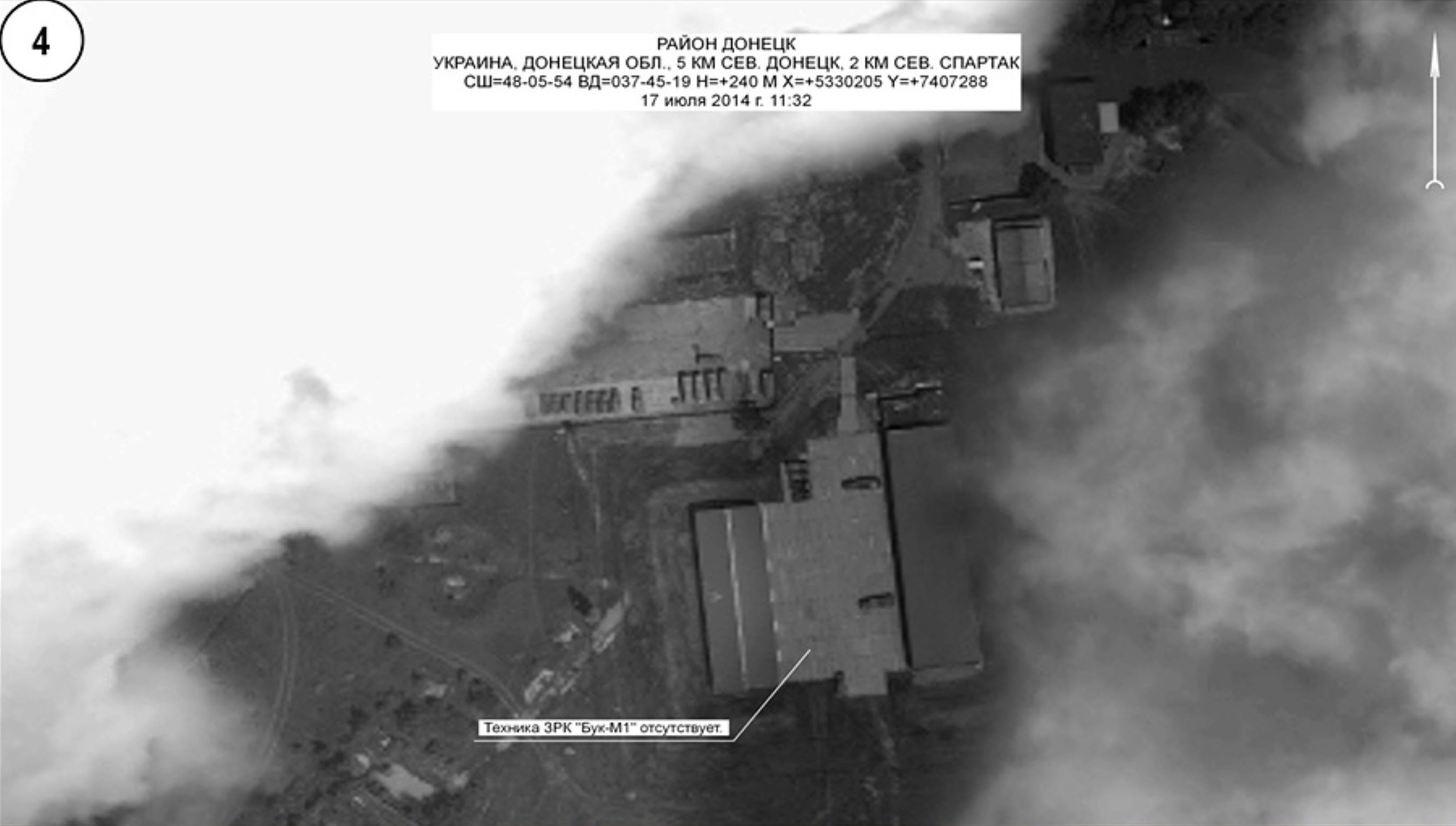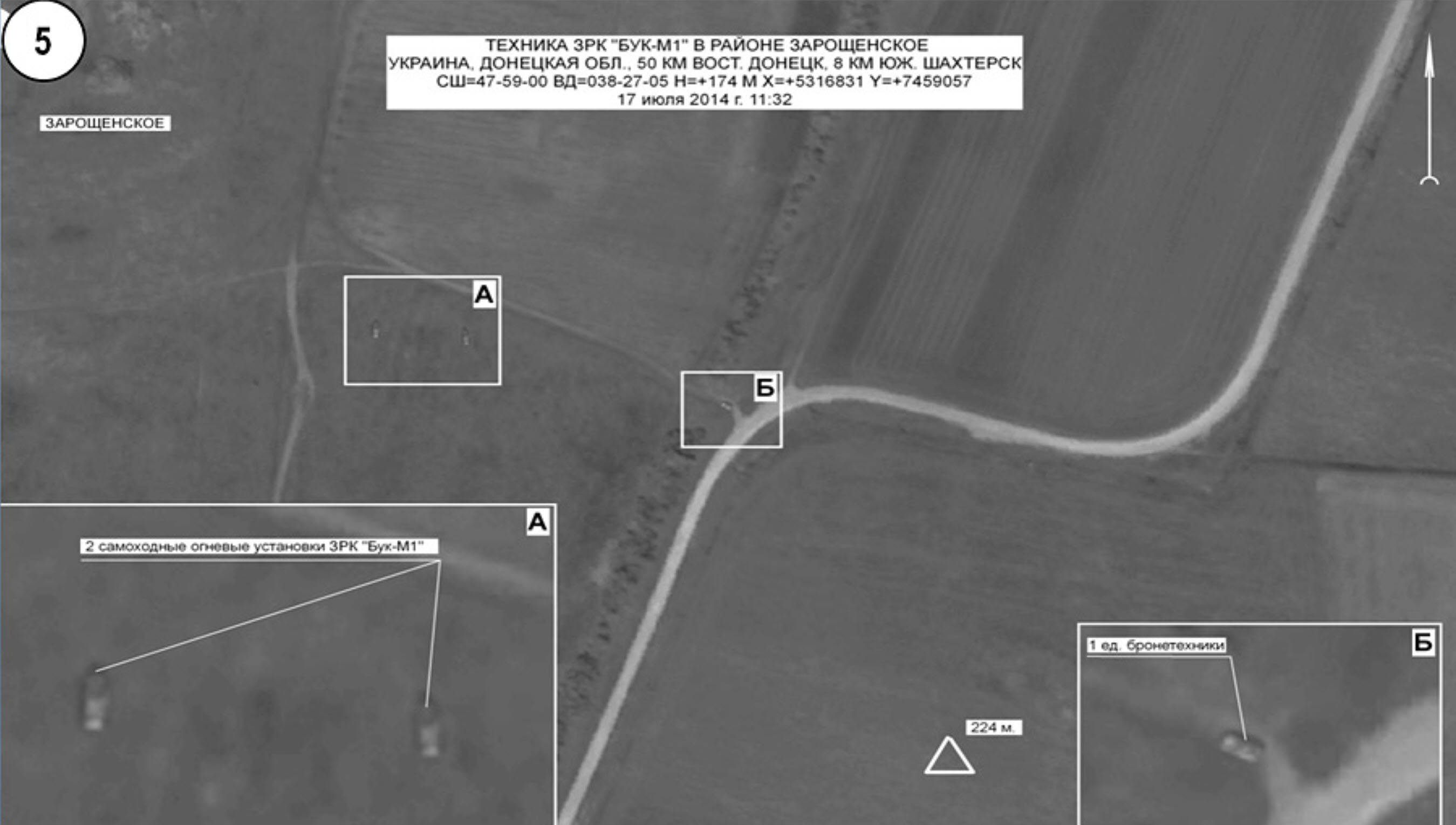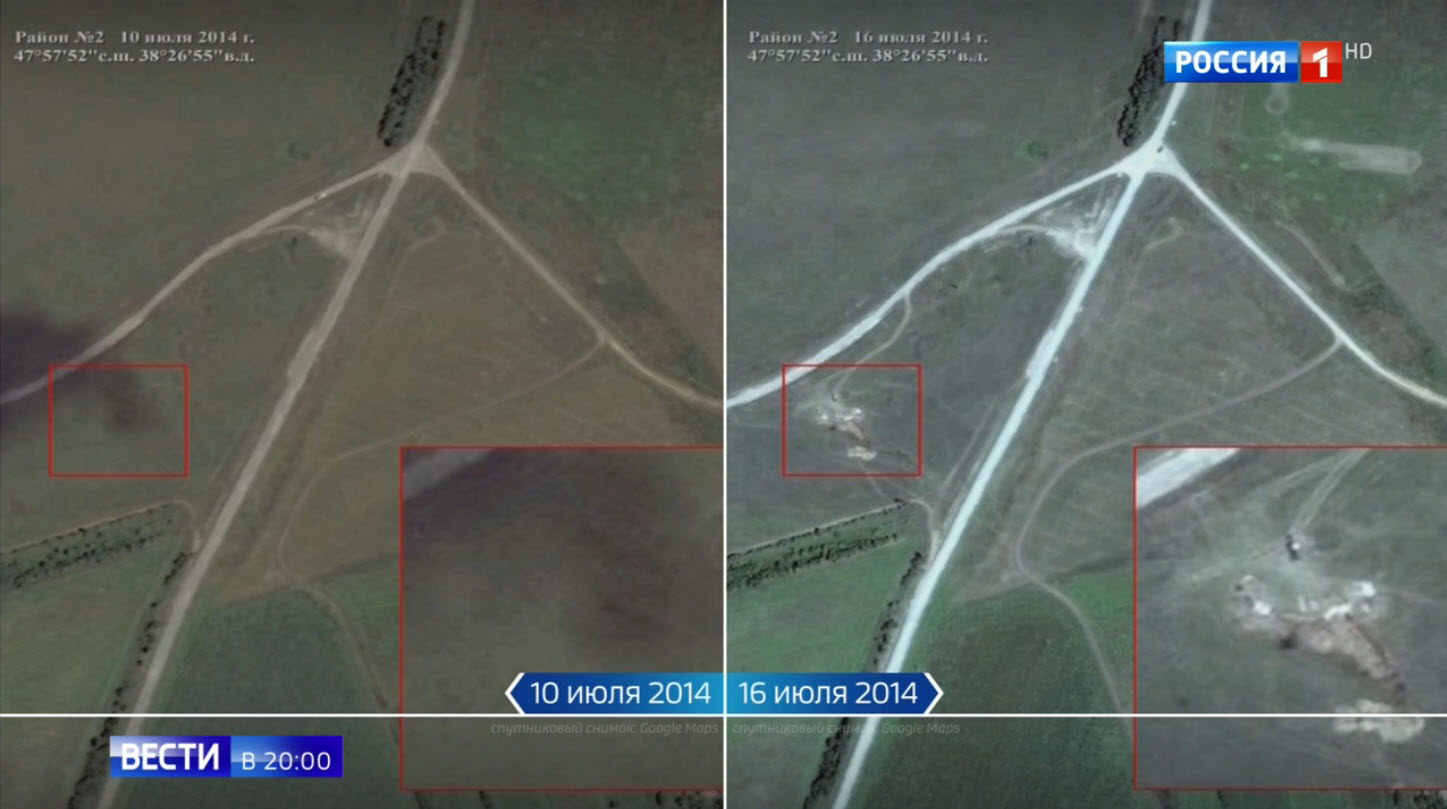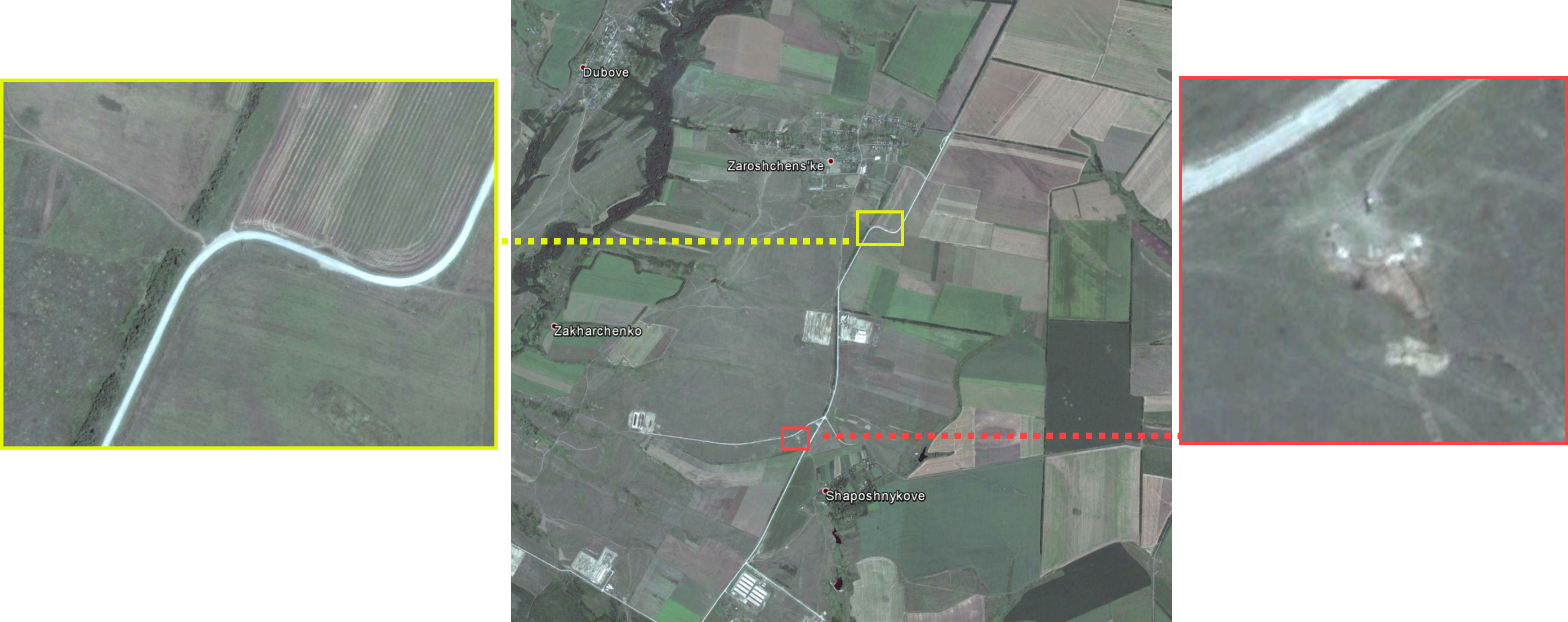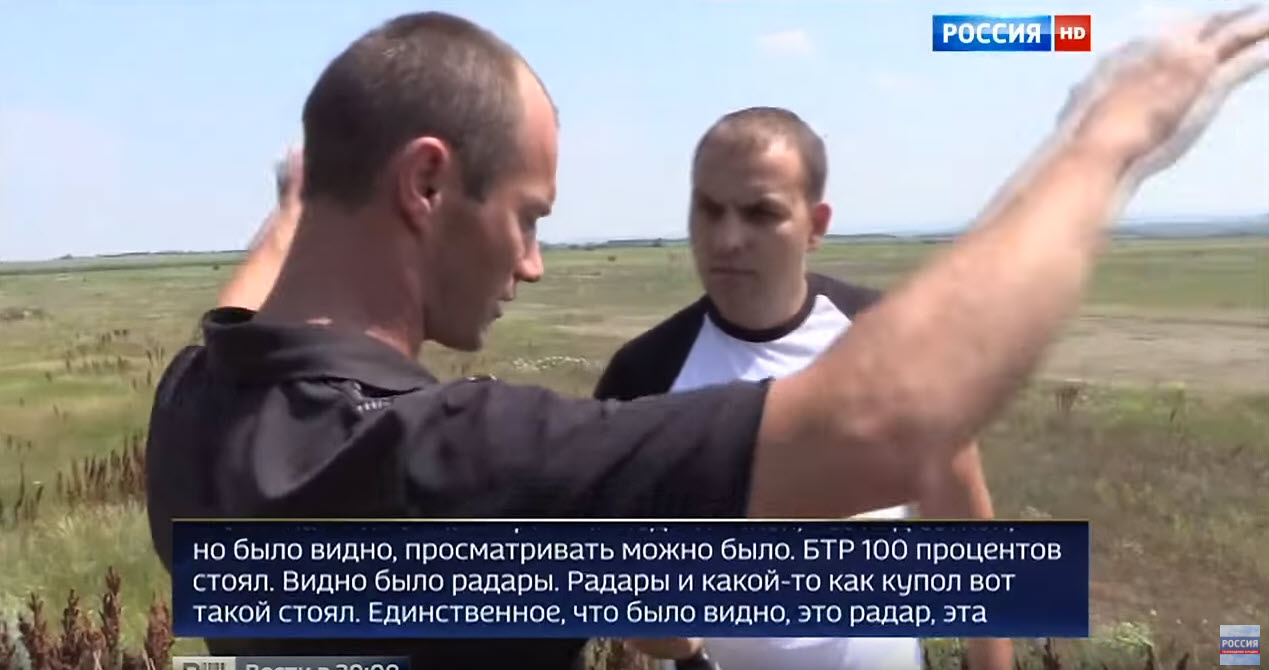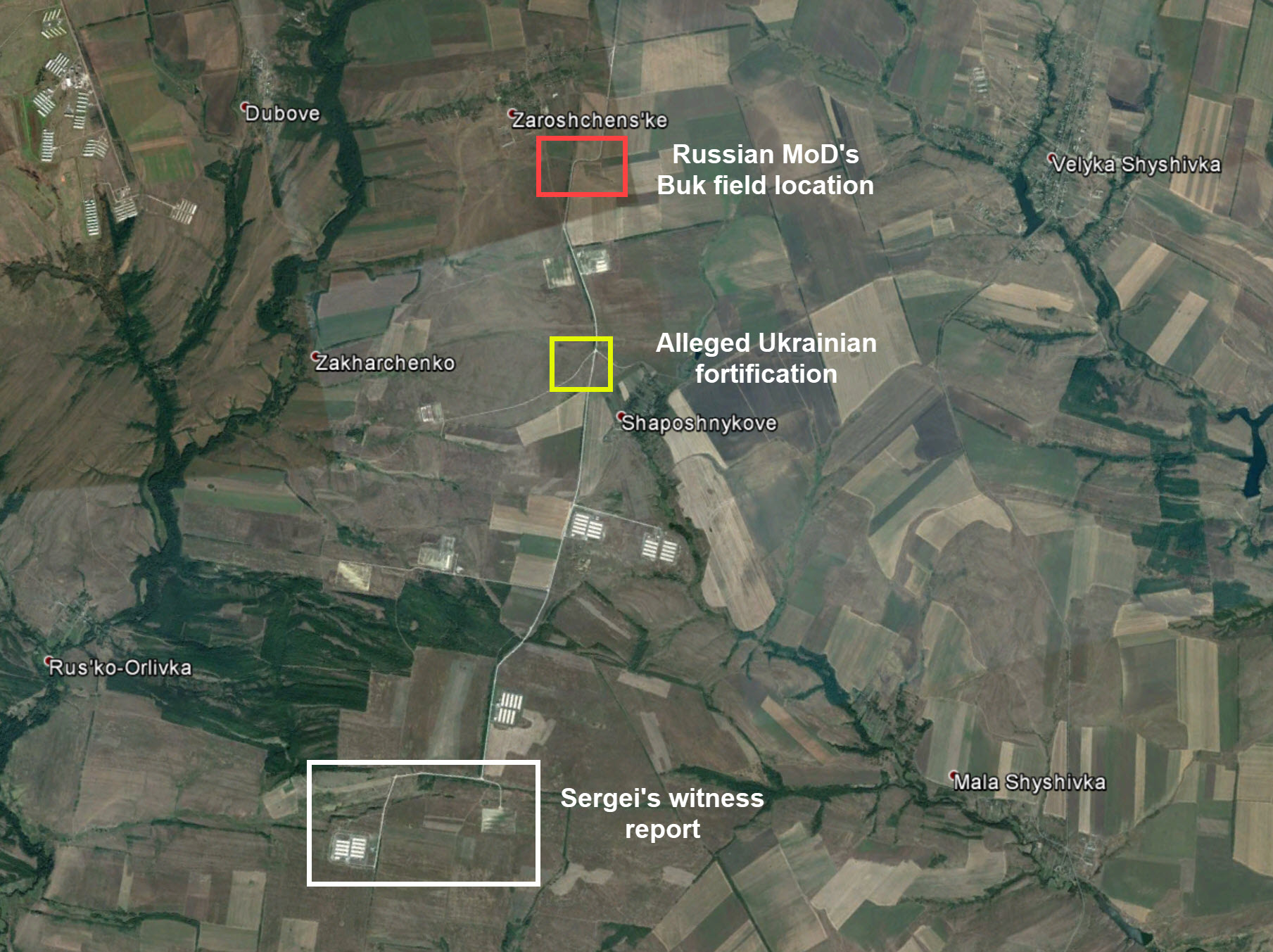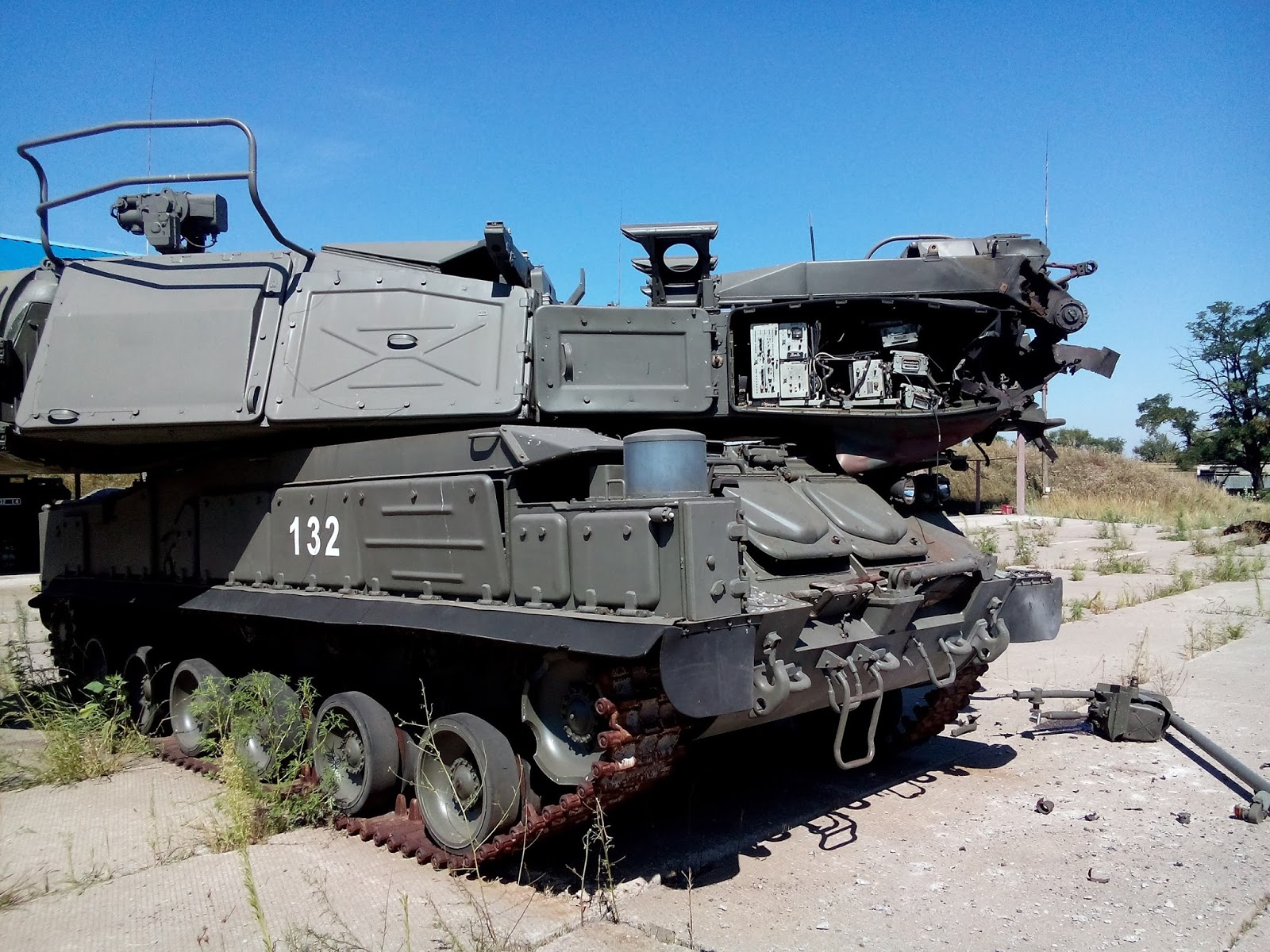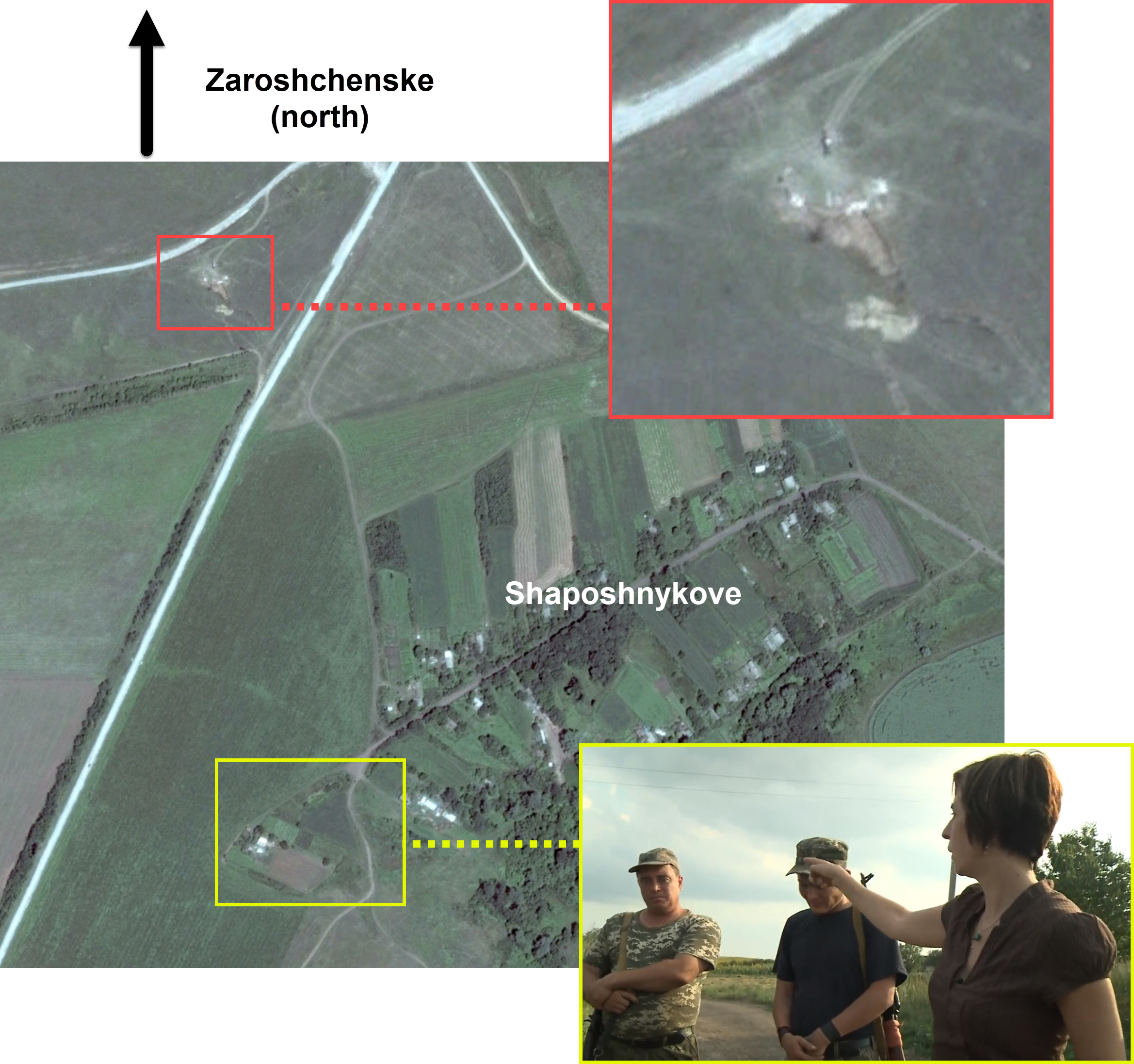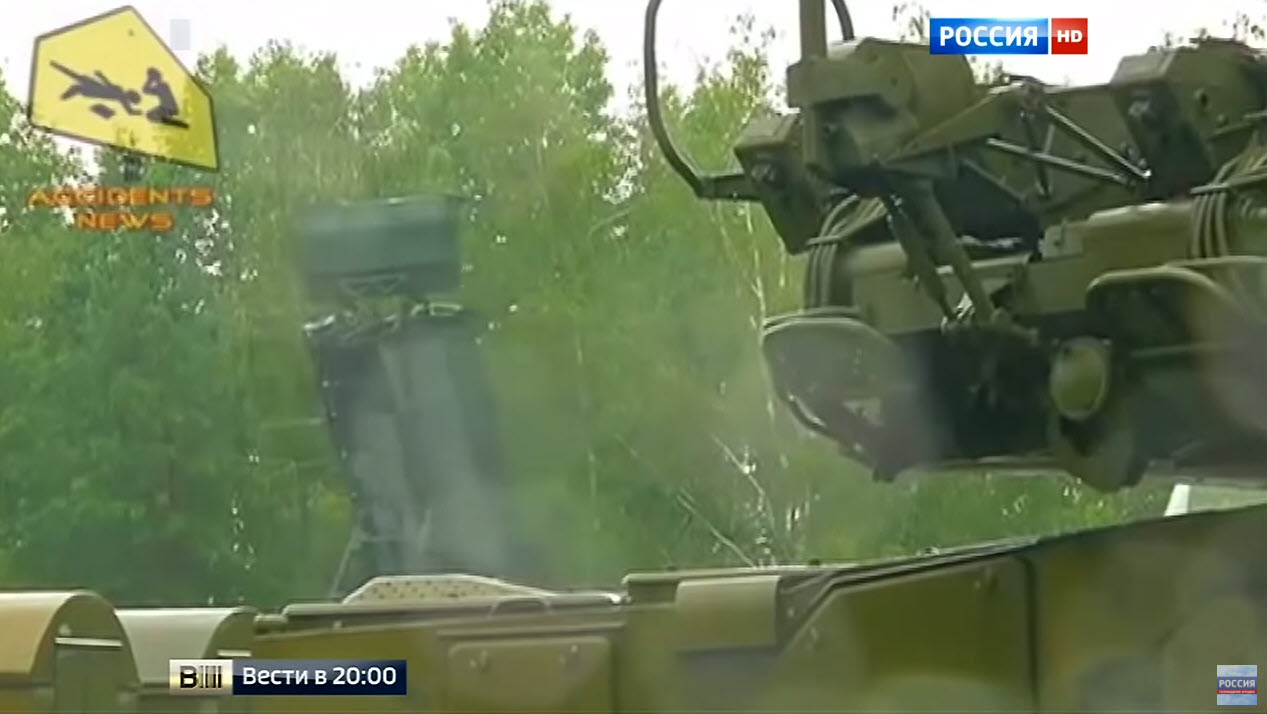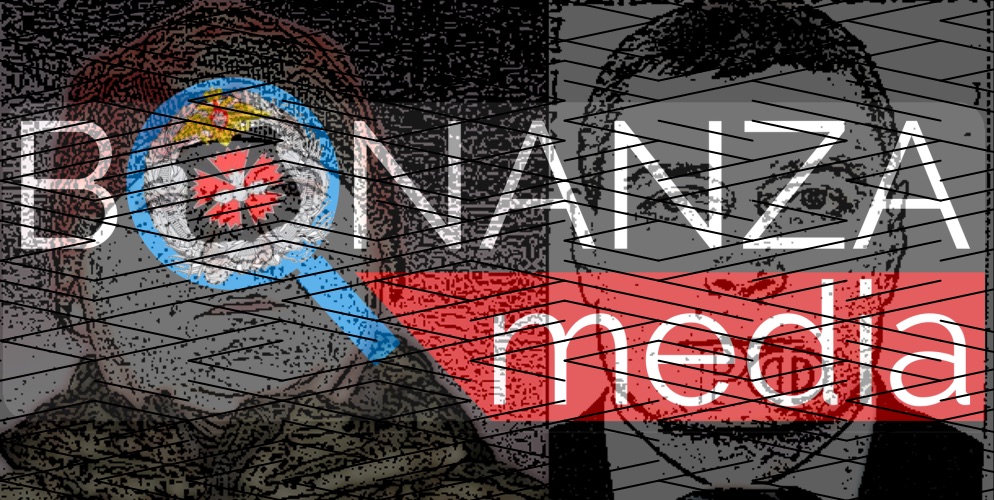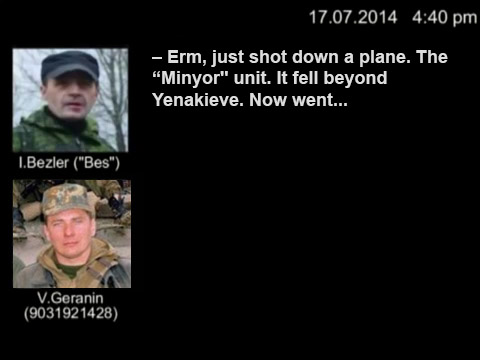The Kremlin's Shifting, Self-Contradicting Narratives on MH17
Just a few hours after the downing of Malaysian Airlines Flight 17 (MH17), the circumstances that caused the tragedy came to light: a Buk-M1 Russian-made anti-aircraft missile system was fired by either Russian-led separatists or Russian forces from an area near Snizhne, Ukraine, leading to the death of 298 civilians aboard the passenger plane. Over three years since the downing, every credible investigation into the tragedy has confirmed this initial claim, with each photograph, video, and independent forensic investigation reinforcing the “Russian/separatist Buk” claim and adding new details that give us a greater understanding of how this incident happened. In short, the “narrative” from Western governments, the official Dutch criminal and forensic investigations, and the site you are reading now has been linear.
This same linear trajectory towards greater clarity and away from self-contradiction cannot be attributed to the Kremlin’s narrative, or narratives, related to MH17. On July 21, 2014, just four days after the downing, the Russian Ministry of Defense (MoD) held a press conference that made a series of self-contradictory claims blaming Ukraine, rather than Russia or Russian-led separatists, for the Boeing 777’s shoot down. Today, the Kremlin–via its Ministry of Foreign Affairs (MFA), Ministry of Defense, state-funded media outlets, and state-funded defense company “Almaz-Antey”–has silently abandoned, while never explicitly retracting, nearly every piece of evidence it presented four days after the downing.
A microcosm of the Kremlin’s shift on MH17 can be seen in the Ukrainian fighter jet conspiracy theory. In comment sections and YouTube videos you will often encounter talk of how a Ukrainian fighter jet, most commonly named as a Su-25 or a MiG-29, shot down MH17; however, the Kremlin has long abandoned the claim that this was the cause of the MH17 shoot down. Instead, throughout 2017, the Kremlin has thrown its entire weight behind the idea that a Ukrainian Buk system shot down MH17 from a position near Zaroshchenske.
Unless you have closely followed each twist and turn of the MH17 case, including each Kremlin’s state-funded media outlet’s report on the tragedy, it is quite difficult to keep the Kremlin’s narratives on MH17 straight. In 2014 and 2015, Russia’s main state-funded news program, Vesti, threw nearly its full weight behind the Su-25 theory, even airing an experiment with actual fighter jets showing how a Ukrainian fighter jet riddled MH17 with cannon fire. However, at the end of 2017, in complete contradiction to their previous segments, Vesti aired a new segment claiming–without any mention of a fighter jet–that a Ukrainian Buk was solely responsible for the tragedy.
This article will detail the development of the Kremlin’s narratives on MH17, which have become unrecognizable over the past three years. It would take a full-length book to provide a comprehensive treatment of all of Russia’s messaging related to the MH17 case, but here we will focus on the development of the Kremlin’s position on the cause of the downing, and the current state of the Kremlin’s MH17 narrative. We will also deconstruct this narrative point-by-point, detailing how it may be even more illogical than the Ukrainian fighter jet theory it initially supported. To survey the Kremlin’s public messaging on MH17, we studied the following sources, with the presumption that they represent the official viewpoints of the Russian government:
- Statements and reports from government officials (such as Vladimir Putin), committees (such as the Russian Investigation Committee), and ministries (such as the MFA and MoD and their spokespersons).
- Statements and reports from Russian embassies and their ambassadors.
- Statements and reports from Almaz Antey, a state-owned defense manufacturer that developed the Buk missile.
- Media outlets funded either entirely through government or proxy government funds. Some of these outlets include television channels, such as Russia-1 & Russia-24 (which airs Vesti). We also included online portals and wire services, such as TASS and Sputnik.
First, we will consider the positions initially taken by the Kremlin soon after the downing of MH17 for greater context of how the current narrative came into formation.
The Initial Kremlin Position: July 2014
On July 21, 2014, four days after the MH17 downing, the Russian MoD held a press conference that took a scattershot approach to establishing the Kremlin’s MH17 narrative(s). Instead of presenting a firm, singular theory of the incident that led to the downing of MH17, they presented a series of self-contradicting claims that placed blame on the Ukrainian government.
Bellingcat has extensively detailed the factual issues with the claims made in this press conference, found chronologically in the following articles:
- Caught in a Lie – Compelling Evidence Russia Lied About the Buk Linked to MH17 (July 24, 2014)
- SU-25, MH17 and the Problems with Keeping a Story Straight (January 10, 2015)
- Fact Checking the Russian Ministry of Defence’s July 21st MH17 Press Briefing with Checkdesk (January 12, 2015)
- Who’s Lying? An In-depth Analysis of the Luhansk Buk Video (May 29, 2015)
- New July 17th Satellite Imagery Confirms Russia Produced Fake MH17 Evidence (June 12, 2015)
- Zaroshchens’ke Launch Site: Claims and Reality (July 13, 2015)
- Russia’s Colin Powell Moment – How the Russian Government’s MH17 Lies Were Exposed (July 16, 2015)
- The Russian Defence Ministry Presents Evidence They Faked Their Previous MH17 Evidence (September 26, 2016)
The main claims by the Russian MoD in this press conference are listed below, along with a brief description of each claim’s most glaring factual inaccuracy:
- The course of MH17 was deliberately changed to shift it over a war zone in Ukraine [the map showing the MH17 flight path shown during the press conference was fabricated and not used in future Russian MoD press conferences, and there was no significant flight path diversion]
- A video showing the Russian Buk that has since been confirmed as the weapon that downed MH17 shows the missile launcher moving not through Russian/separatist stronghold Luhansk, but instead Ukrainian-controlled Krasnoarmeysk [the video has been conclusively geolocated to Luhansk, not Krasnoarmeysk, and the text supposedly visible on a billboard showing an address in Krasnoarmeysk was fabricated]
- A Ukrainian aircraft was detected near MH17 during the crash, as supported by Russian radar data [in 2016, the Russian MoD held another press conference in this same room on newly “discovered” radar data: this “Ukrainian aircraft” was no longer present]
- A Ukrainian Buk TELAR was removed from its base near Spartak, Ukraine shortly before the downing of MH17, and was then relocated to a field south of Zaroshchenske, where it, along with a second Buk TELAR and another military vehicle, was deployed on July 17, 2014 [the satellite images published by the MoD have been thoroughly debunked: firstly, after Bellingcat purchased a satellite image taken at almost the exact same time provided by the Russian MoD, showing inconsistencies with their image; secondly, after Dr. Jeffrey Lewis and his team at the Middlebury Institute of International Studies at Monterey used a sophisticated digital analysis tool to show conclusively that the Russian satellite images were significantly digitally altered]
All of these claims have been debunked by multiple sources, sometimes even from the evidence provided by the Russian government itself. Additionally, each of these claims have been abandoned by the Kremlin–except the final one, claiming that a Ukrainian Buk was deployed near Zaroshchenske, where it fired the missile to down MH17.
The statements made by Russian ambassadors and officials in the week following the tragedy match the July 21st press conference: no single narrative, but rather a wide-ranging list of “concerns,” grievances of Russia being accused by Western media and politicians, and accusations of Kyiv’s responsibility.
For example, in a July 21st interview with the Russian Ambassador to Malaysia, Lyudmila Vorobyeva, the diplomat gave credence to a number of claims: pointing out that a Ukrainian crew may have been targeting Russian President Putin’s plane, that a Ukrainian “air defense system” fired on the plane, and that Russian-led separatists had no access to any surface-to-air missile systems that could have downed MH17. Ambassador Vorobyeva also repeated the MoD’s false claim of a Ukrainian fighter jet near MH17.
The day after the downing. Russia’s UK Ambassador Alexander Yakovenko aired his grievances with Russia being “groundlessly” targeted for blame:
“Since the day of the disaster we have been witnessing a powerful information attack on our country in international media and fora (including the UNSC). It has been groundlessly claimed that Russia or ‘separatists controlled by Russia’ were responsible for the downing of Flight MH-17. Such irresponsible and unproven statements are being issued up to this moment. Their aim is to negatively influence the media background surrounding the investigation. We consider such statements and unfounded accusations as an attempt to dissimulate the true facts concerning the catastrophe and to cover up the identities of the true perpetrators of the crime.”
Ambassador Yakovenko dismissed the evidence against Russia and the separatist it leads by waving away the extensive amount of digital evidence showing a Russian Buk TELAR moving through Russian/separatist-held territory on the day of, and morning after, the shoot down:
“The case, as is admitted, is built upon photos and messages from social media sites, placed by Ukrainian authorities and since then proved to be forgeries, as ambassador Churkin demonstrated at the UN security council meeting. Naturally, our American partners say that they have no way of certifying the authenticity of those materials.”
On July 19, two days after the downing, Russian Deputy Defense Minister Anatoly Antonov repeated a fabricated claim that originated on Twitter of how a Spanish air traffic controller named Carlos saw two Ukrainian fighter jets near MH17. Despite the Kremlin’s supposed distrust of online materials related to MH17, one of their leading defense officials made an official statement on Russia-24 on this imaginary “Carlos,” who has since been thoroughly debunked as a Twitter hoax. Even Russian President Putin has repeated the “Carlos” claim in an interview with Oliver Stone in 2017.
Though the vast majority of official statements on MH17 in the week following the tragedy laid blame on Kyiv, we can see some alternate approaches that may have been considered by top Kremlin diplomats and officials, but abandoned. For example, when asked less than a week after the shootdown about the intercepted conversations between Russian-led fighters, Russia’s UN Ambassador Vitaly Churkin, though perhaps spontaneously in response to a press question, laid the groundwork for a Russian position that was never taken: conceding that Ukraine was not responsible for the tragedy, but shielding the Russians/separatists who fired the missile from the most significant consequences in international court.
“According to them, the people from the east were saying that they shot down a military jet … If they think they shot down a military jet, it was confusion. If it was confusion, it was not an act of terrorism.”
Mixed Messages: 2014-2016
Over the next few years, the Kremlin would vacillate between the Ukrainian fighter jet and the Ukrainian Buk theories.
The Russian news program Vesti filmed an “experiment” in October 2014 as part of a longer documentary to show that MH17 was actually downed by Su-25 cannon fire, not a Buk missile. Footage from this “experiment” was also published in an RT documentary on MH17.
In June 2015, the Russian Investigative Committee released information about a “witness” who described how a Ukrainian pilot (Captain Vladislav Voloshin) was responsible for the downing of MH17.
Simultaneous with their claims of a Ukrainian fighter jet using cannon fire and/or an air-to-air missile to down MH17, the same Russian state-funded news programs were promoting a contradicting theory of a Ukrainian Buk missile being used to down the passenger jet. On July 19, 2015, Vesti aired an 11-minute segment that included a witness report from a Ukrainian man named Sergei. This man, who lives in a village in the Donetsk Oblast, claims to have seen Ukrainian military vehicles at a position south of Zaroshchenske (this claim is examined in more detail in the following section of this article).
This segment also places the heavily digitally altered satellite images presented during the July 21, 2014 press conference into context with Sergei’s account, including mentioning footage from a Ukrainian Military TV July 16, 2014 segment showing Ukrainian Buk systems. However, what is not mentioned in this report is that this footage was filmed before July 16, and was actually in the Kharkiv Oblast at a rear ATO base camp, not on the front lines of the war or anywhere near the MH17 crash site.
Nine minutes into this report that provided the Kremlin’s account of how a Ukrainian Buk downed MH17, the report takes a dramatic shift in describing how Ukrainian pilot Captain Vladislav Voloshin downed MH17 with an Su-25 fighter jet. Immediately after this information, the report cites a LiveJournal blogger who claims that Ukraine used an Israeli air-to-air missile to down MH17. The contradictions between the varying accounts in this brief segment are not resolved. In sum, the nature of the Kremlin’s public messaging strategy on the downing of MH17 can be encapsulated in two tweets written on the same day by the Russian Embassy in the United Kingdom:
The Current Kremlin Position
The Kremlin has shifted entirely away from the Ukrainian fighter jet theory, without any explicit redaction and after years of special media reports, fabricated radar evidence, witness reports, and official statements to the contrary. Throughout 2017 and going into 2018, the Kremlin narrative around MH17 is now focused on one theory: a Ukrainian Buk missile system downed MH17. Along with the promotion of this narrative, Russia intensified its attempts to discredit the Dutch-led criminal investigation into the downing, the Joint Investigation Team (JIT).
The Ukrainian Buk Theory
In review of all of Vesti’s segments on MH17 in 2017, there was no notable published content, such as witnesses who have come forward or alleged evidence uncovered, pointing to the Ukrainian fighter jet theory. However, there was a large number of reports asserting how Ukraine deployed a Ukrainian Buk missile system to a field south of Zaroshchenske. Before diving into the new developments in this claim, we should review the fundamental elements of the Ukrainian Buk theory.
According to the July 21, 2014 Russian MoD press conference, a Ukrainian Buk TELAR that was previously deployed at an air defense base in Spartak (just north of Donetsk) was not present at 11:32am on July 17, 2014.
Instead, the MoD implied that this Buk TELAR was, allegedly, 53.5km away (as the bird flies) in a field south of Zaroshchenske. These two satellite images were allegedly taken at the same time.
A December 2017 Vesti report highlights a military position just outside of Shaposhnykove, and a few kilometers south of the alleged launch site near Zaroshchenske. As the report details, this position was developed in the week prior to the downing of MH17, though allegedly created by the Ukrainian Armed Forces, and not Russian/separatist forces.
This position is located near the alleged Zaroshchenske launch site, as seen in the map below (click for full size):
Russia also bolsters its theory with a witness account from a Ukrainian named Sergei, who gave a 2015 interview to Vesti in a field where he claims to have seen Ukrainian military equipment on the day of the MH17 downing while on his way to work on a nearby farm.
In the interview with Vesti, Sergei claims that on July 17 he was not allowed to pass through the area due to a heavy Ukrainian military presence. He says that he saw 20-30 Ukrainian soldiers, “radars,” and military vehicles. He explained that some of this equipment was covered up, but he was able to identify some of them, such as a BTR (armored personnel carrier) and a rotating radar with a “dome.” The July 2015 Vesti report went on to say that the BTR that Sergei claims to have seen was the same one as in the July 21 MoD satellite image, and that the “radar” units were the same as the two Buk TELARs also visible in the same image.
The Vesti report states that this area was represented in the Russian MoD satellite image from the July 21st press conference; however, in 2015, users at the MH17 Webtalk message board geolocated this footage to an area approximately 6km south of Zaroshchenske. No military equipment is visible in this area in any publicly available, free satellite imagery for mid-July 2014.
Below, a composite of the three locations that the Kremlin narrative has focused on are seen below: the field near where the Russian MoD claimed Ukrainian Buks were deployed on July 17, an alleged Ukrainian military fortification near Shaposhnykove, and the large deployment of military vehicles, including alleged radars, that were witnessed by Sergei on July 17.
Lastly, a recent element added to Russia’s Ukrainian Buk claim is a new Ukrainian witness named Yuri Baturin who claims to have observed the shoot down of MH17 on radar and spoken with Ukrainian Buk crew members who were allegedly deployed to near Zaroshchenske. This “discovery” of a witness is quite similar to the 2015 discovery of a witness who spoke about Ukrainian pilot Captain Vladislav Voloshin, as both witnesses served in the Ukrainian Armed Forces and later fled to Russia. This interview was originally taken by the Russian Ministry of Defense’s television channel TV Zvezda in October 2017, but then republished in December, where it was amplified across other state-funded outlets.
Radar Data and Almaz-Antey Reports
The two pieces of evidence related to the Ukrainian Buk theory that Russia most often highlights are the reports of state defense manufacturer Almaz-Antey (producer of Buk missiles) and radar data that was “discovered” in 2016. The Almaz-Antey reports, which claim that the missile that downed MH17 was launched from the area near Zaroshchenske, are presented by the Kremlin as an alternate source of information to the official forensic investigation into the plane’s downing conducted by the Dutch Safety Board (DSB). The proposed launch sites by Almaz-Antey and the Dutch investigations (determined by the NLR and Kyiv Research Institute) can be seen below:
It should be noted that according to the most recent Almaz-Antey report, the field south of Zaroshchenske highlighted by Russian MoD satellite imagery is not within the area of potential launch sites.
The 2016 radar data, which contradicts the 2014 “radar data” presented by the Russian MoD, is widely considered inconclusive by the international community and the Dutch-led investigation into MH17.
In early 2017, the primary focus of the Russian messaging on MH17 was focused on the Russian radar data presented to the Dutch investigation. This radar data was first presented in September 2016 after it was “discovered” accidentally during “scheduled maintenance.” This data was presented in the same room and in the same fashion as the July 21, 2014 MoD press conference, yet it dismissed evidence presented two years prior of a Ukrainian fighter jet in the area. This contradiction was not acknowledged in the Kremlin messaging around MH17, with the focus instead shifting to how this radar data did not show a Buk missile launch from the field south of Snizhne where Buk 332 was present at the time.
The Dutch government explained that this radar data would not necessarily show a Buk missile due to its trajectory and size; however, the Russian aviation regular Rosaviatsia disputes this claim: “It is inappropriate to say that a radar station could miss the missile,” its head said in June 2017. After Russia’s “discovered” radar data did not significantly alter the trajectory of the Dutch investigation into the MH17 downing, the Kremlin and its media outlets took this as evidence that the JIT only considers evidence that fits a supposed preconceived notion of Russia’s guilt.
In a response to an interview held by Fred Westerbeke, the head of the Dutch criminal investigation into MH17, Russian MFA spokesperson Maria Zakharova aired Russia’s grievances of how its “evidence” is not valued by the international community:
“Mr Westerbeke’s interview has shown that contributions from Ukraine and the United States, as well as information from online sources are considered to be highly valuable, whereas any assistance provided by Russia has been deliberately downplayed, including the secret data we declassified for this purpose, information about an unprecedented experiment held by the Almaz-Antey Concern, and the original data from our radar, all of which is objective and accurate information that could really help the investigation.”
Fundamental issues with Zaroshchenske: the route
Even if one discounts the conclusive evidence showing that the Russian MoD’s satellite images concerning Zaroshchenske were heavily digitally altered, it is impossible that the Buk TELAR at the base near Spartak was able to travel to this field by 11:32am. Additionally, this Buk was heavily damaged, as seen below.
A satellite image taken by Digital Globe at 11:08am on the same day shows that the Buk TELAR was present on the base, with no evidence that it was being loaded onto a transport truck at that time. Needless to say, it is impossible that this Buk TELAR could travel from the base to the field in 24 minutes. Even if the Buk TELAR was immediately loaded onto a truck after the satellite image was taken at 11:08am, and then traveled at a normal speed through the Russian/separatist-strongholds of Donetsk, Makiivka, and/or Yasynuvata and was not stopped in any of the numerous Russian/separatist checkpoints along the way, it would have taken over 90 minutes to reach Zaroshchenske.
Fundamental issues with Zaroshchenske: territorial control
If we make a concession to fantasy and say that it is possible that this Ukrainian Buk TELAR, or other ones deployed at another base, was able to reach the Zaroshchenske field in time for the 11:32am satellite image, we must consider the reality of the situation of territorial control on July 17, 2014. Despite continued Russian statements that the village of Zaroshchenske was controlled by the Ukrainian government in mid-July 2014, there is no credible evidence corroborating this claim, while there is extensive documentation of Russian/separatist control in both this area and a village even further south of the field in question. Furthermore, the December 2017 Vesti report claimed that the military position just south of the Zaroshchenske field, near the village of Shaposhnykove, was controlled by the Ukrainian Armed Forces in mid-July 2014. There is a wealth of evidence directly refuting this allegation.
Bellingcat has written two extensive reports on the situation around Zaroshchenske in mid-July 2014: Zaroshchens’ke Launch Site: Claims and Reality and Zaroshchens’ke Revisited: Almaz-Antey’s New Launch Areas. Nearly every point raised in Russia’s claims surrounding Zaroshchenske can be refuted by the open source evidence detailed in these two reports. When looking at Zaroshchenske in particular, there was no fighting reported in mid-July 2014 in the village, and there were a number of known Russian/separatist checkpoints and fortifications nearby, including Shakhtarsk to the north and Velyka Shyshivka to the east and southeast.
This military position south of the Zaroshchenske field was built facing the south, towards Ukrainian-held territory, and not the north, towards Russian/separatist-held territory. In the days leading up to the downing, there were no reports in Ukrainian, Russian, or separatist media outlets of any fighting in this immediate area. In fact, locals told Dutch journalist Rudy Bouma that there were no Ukrainian forces within 4-6km of Zaroshchenske in mid-July 2014 and there was no missile launch in the area. However, Ukrainian forces did eventually launch an offensive near this area: after the downing of MH17. The BBC visited Shaposhnykove on July 24, 2014, a week after the MH17 downing, following reports of a civilian death as a result of Ukrainian shelling of the village the previous night.
In this report, it is clear that the village is controlled by Russian/separatist forces, with soldiers even patrolling the area. A conversation between the BBC correspondent and two Russian/separatist fighters takes place a bit over a half-kilometer southeast of the military position highlighted by Vesti.
If the military position just outside of Shaposhnykove was actually constructed and manned by Ukrainian forces, as the Vesti report from December 2017 alleges, then we would expect to find some evidence of fighting or a retreat before July 23, when Ukrainian artillery shelled Russian/separatist-controlled Shaposhnykove.
Lastly, the Dutch-led criminal investigation into MH17 published a phone conversation between two Russian/separatist fighters where they discuss the Zaroshchenske theory, prompted by a press conference held by Almaz-Antey. The two men agree that the area was controlled by Russian/separatist forces at the time, and there was no missile launch in the region.
Fundamental issues with Zaroshchenske: location of deployment
Another fundamental issue with the Russian MH17 narrative is the likelihood that the Ukrainian Armed Forces would deploy two Buk TELARs, highly vulnerable and valuable pieces of military equipment, to an area that the Kremlin would say was under, in even the most generous interpretation, soft Ukrainian control. Multiple fortified Russian/separatist fortifications and checkpoints were located a few kilometers east in Velyka Shyshivka and north in Shakhtarsk, leaving the two Buk TELARs allegedly in the Zaroshchenske field highly vulnerable, as the Russian MoD’s satellite image showed only a single military vehicle, likely a BTR (armored personnel carrier), nearby.
Fundamental issues with the Zaroshchenske claim: Sergei’s witness account
Sergei’s claim of a Ukrainian military deployment 6km south of Zaroshchenske came a year after the initial development of the Kremlin MH17 narrative, but it is still worthwhile to analyze. The most important detail in the July 2015 Vesti report about the witness account is that it took place in the same location as the Russian MoD satellite image, which is demonstrably false through simple geolocation, showing that Sergei was actually near a poultry farm 6km south of the Zaroshchenske field.
Another detail from Sergei’s witness account is that he saw “radar” vehicles with domes in this area, which the Vesti report then claims are the same as the two Buk TELARs visible in the Russian MoD satellite image. To stress the appearance of these “radar” vehicles, Sergei makes an arcing motion with his hands when speaking about the dome. Even though the Buk radar system is called “Dome” (“Купол“), it looks nothing like one. In fact, there is no Buk-M1 vehicle, radar or otherwise, that has a dome that would match Sergei’s description. The Vesti report shows what a Buk radar unit looks like: a rotating radar mast, which is not dome-shaped.
Additionally, in the Russian MoD satellite image itself, the two Buk units are noted to be TELARs (самоходные огневые установки ЗРК “Бук-М1”), not radar systems (cтанции обнаружения целей).
It is possible that Sergei saw Ukrainian military equipment near the poultry farm 6km south of Zaroshchenske on July 17, 2014, as Bellingcat’s previous research into this topic shows that this area was not under firm Ukrainian or Russian/separatist control in mid-July 2014. However, Sergei’s descriptions give no indications that there were any Buk systems present among this alleged military equipment; in fact, his own descriptions work against the Kremlin’s claim due to the “dome” on the alleged radar systems that were present.
Fundamental issues with the Zaroshchenske claim: Baturin’s witness account
Former Ukrainian officer Yuri Baturin claimed in an interview with Russian MoD television channel Zvezda TV that he witnessed the downing of MH17 while watching a radar screen in Kharkiv and spoke to a Ukrainian soldier who spoke about a Buk missile complex being deployed near Zaroshchenske. The claim that a Ukrainian Buk complex was in a field near Zaroshchenske on July 17, 2014 has been thoroughly debunked. However, when addressing Baturin’s claim, there is a simpler detail to tackle. In his interview, Baturin told TV Zvezda that immediately after the downing of MH17, he knew the truth of what happened, and decided “precisely at this moment” to leave the military and leave Ukraine for Russia.
As Meduza has noted, both Baturin and TV Zvezda failed to mention the fact that he continued to serve in the Ukrainian military until 2016, where he resigned “for family reasons,” in complete contradiction to the reasons he gave in the TV Zvezda interview.
Fundamental issues with the Zaroshchenske claim: lack of physical evidence
While all of this evidence refutes a range of specific details claiming a Zaroshchenske launch site, there is a far simpler reality that refutes the theory: a complete lack of any physical evidence or reliable witness accounts. There are no visible traces of a missile launch or deployment of military equipment in the field of Zaroshchenske in available satellite imagery between July 16 and 19, 2014. Additionally, numerous journalists have visited Zaroshchenske after the shoot down and spoke with local residents, and were unable to find a single person in the area who observed military activity in mid-July 2014, a missile launch, or movements of Ukrainian military equipment near the field. It was not until July 2015 that Russian-funded media outlets found a witness named “Sergei” who claimed to have seen Ukrainian military equipment in the vicinity, though still over six kilometers south of the alleged launch site.
The Shaky State of the Narrative
In over three years, the Kremlin has completely abandoned one of its two primary claims, the Ukrainian jet theory, and moved all-in towards the other, the Ukrainian Buk theory. However, with as many factual inconsistencies and gaps of logic that the Ukrainian jet theory had, the Zaroshchenske launch site may have even more. As of the publishing of this article, the five main pieces of evidence that buttress the Kremlin’s Ukrainian Buk theory are as follows, with a brief description of where the Kremlin has tripped up with their claim.
- Technical reports from the state-funded defense manufacturer of the Buk missile. These reports were directly contradicted by the Dutch Safety Board’s forensic report.
- A couple of satellite images showing the deployment of two Ukrainian Buk TELARs to a field south of Zaroshchenske. These images were heavily digitally altered.
- Satellite imagery showing the development of a Ukrainian military fortification south of the Zaroshchenske field. This position was in territory controlled by Russian/separatist forces, near a village it had soldiers stationed.
- A witness who described seeing radar and military units near Zaroshchenske on July 17, 2014. This alleged deployment was 6km south of Zaroshchenske, and the visual description given by Sergei of these radar systems does not match that of the Buk complex.
- A former Ukrainian officer who says he quit the Ukrainian military as soon as he realized that they were lying about MH17. He actually quit in 2016 for “family reasons,” and only emerged to tell his story over three years after the MH17 downing. No details in his witness account are corroborated by non-Kremlin sources.
